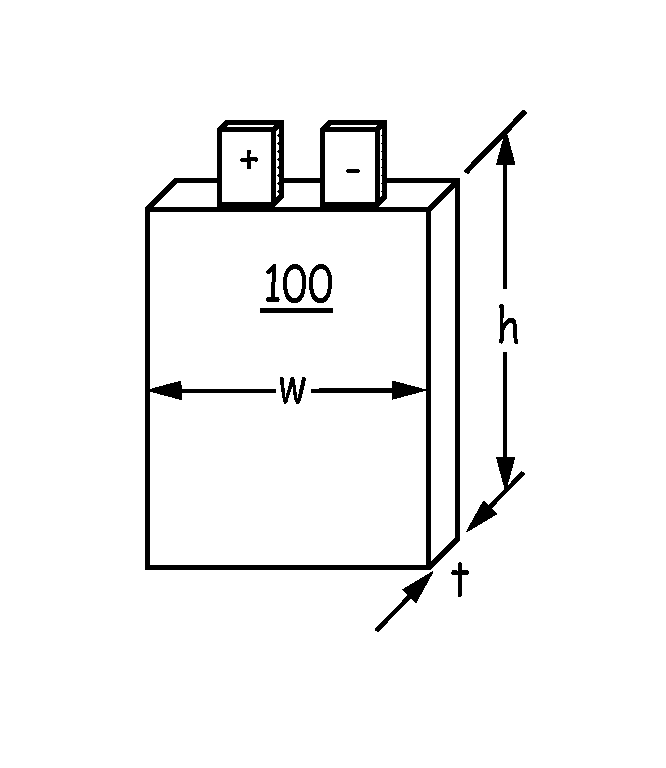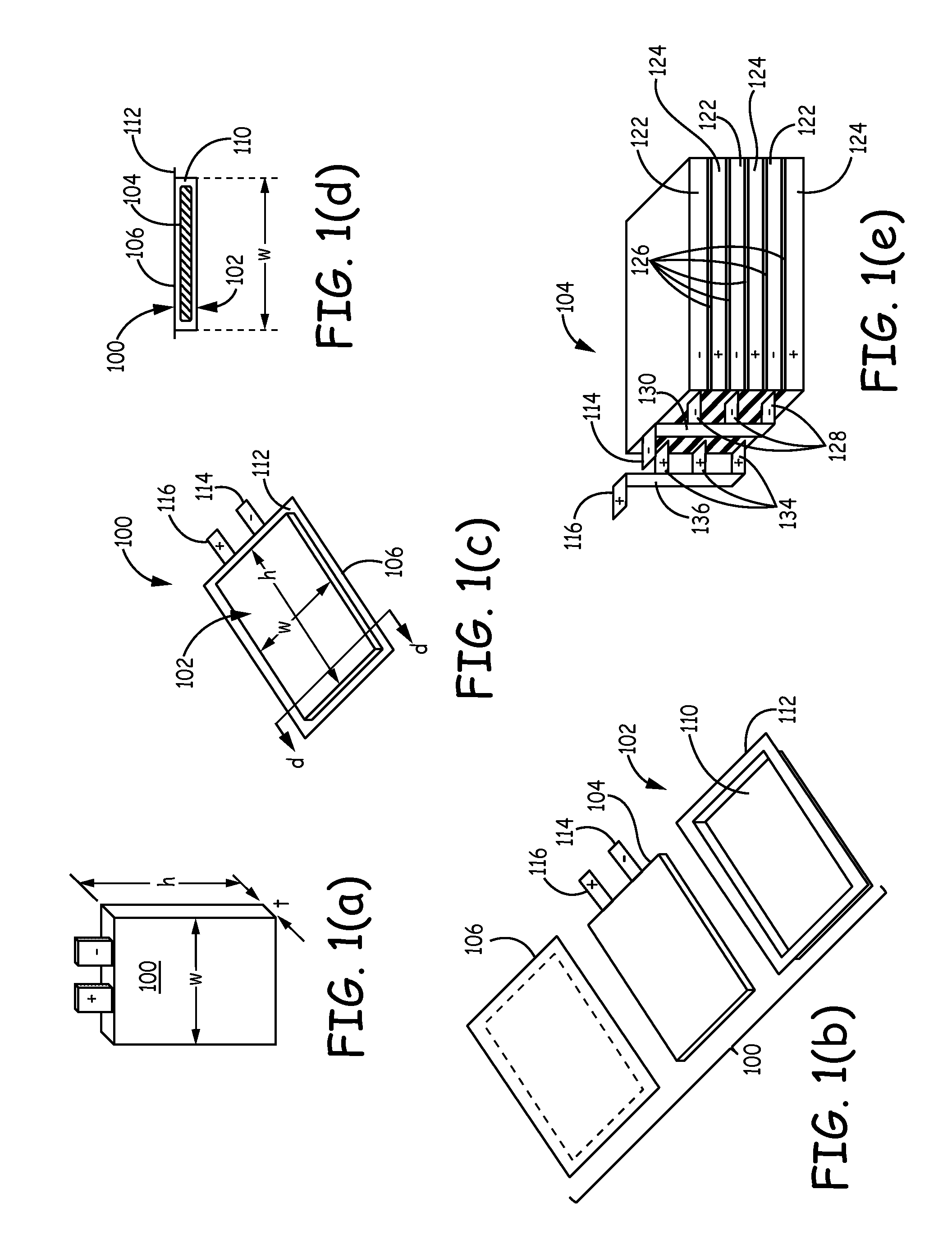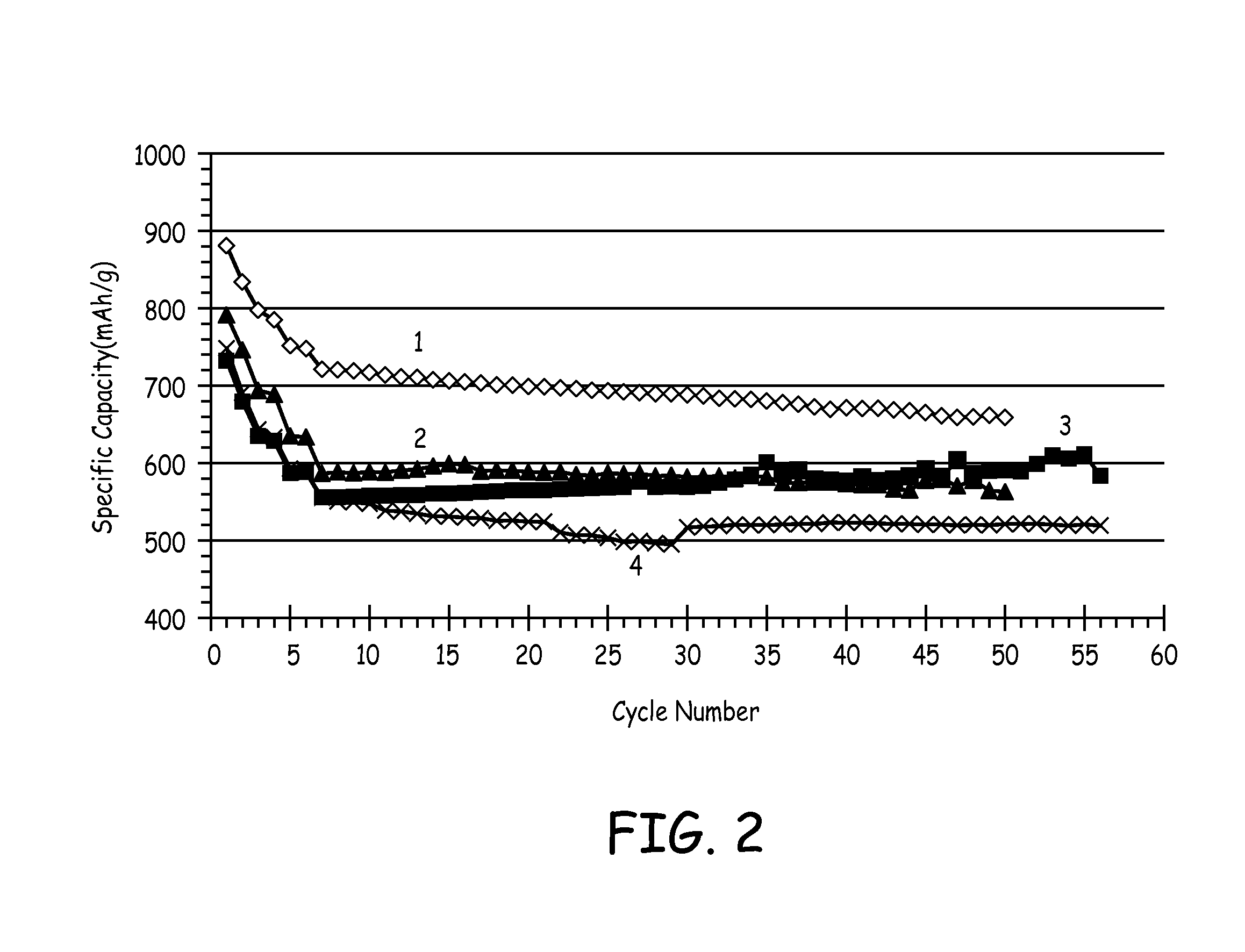Silicon-based active materials for lithium ion batteries and synthesis with solution processing
a technology of active materials and lithium ion batteries, applied in silicon compounds, conductors, cell components, etc., can solve the problems of reducing cycling efficiency, unsuitable commercially, and structural integrity of negative electrode materials of high capacity
- Summary
- Abstract
- Description
- Claims
- Application Information
AI Technical Summary
Benefits of technology
Problems solved by technology
Method used
Image
Examples
example 1
Preparation of SiOx—C Composite from Polysiloxane Liquid Precursors
[0123]Porous SiOX—C composite was formed by the pyrolysis of crosslinked polysiloxanes systems with liquid precursors A and B that have reactive —SiH groups and double bonds respectively to provide for the crosslinking.
[0124]Specifically, to form a first sample, precursor A (e.g. 0.8 g PHMS) and precursor B (e.g. 0.47 g DVB) were uniformly mixed in 20 mL toluene or xylene in a drybox to form a reaction solution. Diluted Pt catalyst (0.2% Pt in xylene) was prepared by diluting 2.3% Platinum Divinyltetramethyldisiloxane complex (Gelest) with xylene. Eight drops of diluted Pt catalyst (0.2% in xylene) were added to the reaction solution under vigorous agitation at room temperature and the resulting reaction mixture gelled in 20 min. To further react the precursor, the gelled reaction mixture was heated at 70° C. for 2 hrs and then dried at the same temperature in a dry box or a vacuum oven. The dried sample is further c...
example 2
Preparation of SiOx—C Composites from Sol-Gel Process
[0128]SiOx—C composite was formed in sol-gel system with liquid precursors A and B that have alkoxy and alkyl groups, respectively.
[0129]Liquid precursor A tetraethoxysilane (e.g. 1 g TEOS) and liquid precursor B diphenyldimethoxysilane (e.g. 4.69 g DPDS) were vigorously mixed in 20 mL ethanol to form a reaction solution. Several drops of concentrated HCl and DI water were added into the reaction solution to form a viscous sol-gel solution. Ethanol in the sol-gel solution was then slowly evaporated when the solution was reacted at 70° C. to form a reaction mixture. Cross-linking occurs in the reaction mixture which was then dried under vacuum at 110° C. overnight to form a solid product. The solid product was transferred to a furnace and heated at a ramping rate of 5° C. / min under argon atmosphere and then further reacted at 200° C. for 3 hrs to form a treated solid product. The treated solid product was continually heated at 5° C...
example 3
Preparation of n-Si / SiOx—C Composite Via Polysiloxane or Sol-Gel Precursors
[0131]This example is directed to the incorporation of submicron silicon powder into the silicon oxide-carbon composites. In order to increase the capacity, n-Si was added as a solid precursor. n-Si / SiOx—C composites were prepared by the pyrolysis in an inert atmosphere of the mixture of n-Si and polysiloxane or Sol-gel.
[0132]For polysiloxane system, n-Si powder was simply added to the liquid precursor mixture in example 1 and dispersed before the liquid precursor was cross-linked with the help of catalysts. For sol-gel system, the liquid precursor in example 2 was cross-linked with the help of catalysts and become a viscous sol-gel solution. n-Si powder (commercial powder with an average particle size from 50-70 nm) was added to the sol-gel solution and dispersed. The rest of the procedures were the same as those in examples 1 and 2.
[0133]The final n-Si / SiOx—C composite was ground in a mortar and sieved with...
PUM
| Property | Measurement | Unit |
|---|---|---|
| particle diameter | aaaaa | aaaaa |
| particle size | aaaaa | aaaaa |
| weight percent | aaaaa | aaaaa |
Abstract
Description
Claims
Application Information
 Login to View More
Login to View More - R&D
- Intellectual Property
- Life Sciences
- Materials
- Tech Scout
- Unparalleled Data Quality
- Higher Quality Content
- 60% Fewer Hallucinations
Browse by: Latest US Patents, China's latest patents, Technical Efficacy Thesaurus, Application Domain, Technology Topic, Popular Technical Reports.
© 2025 PatSnap. All rights reserved.Legal|Privacy policy|Modern Slavery Act Transparency Statement|Sitemap|About US| Contact US: help@patsnap.com



